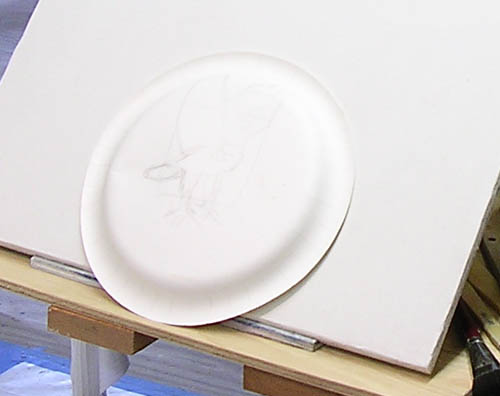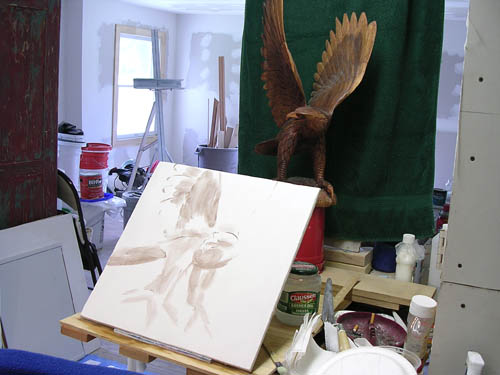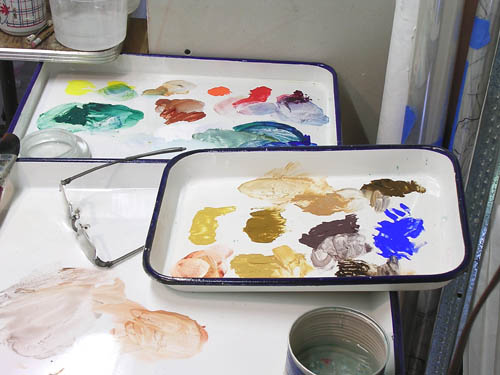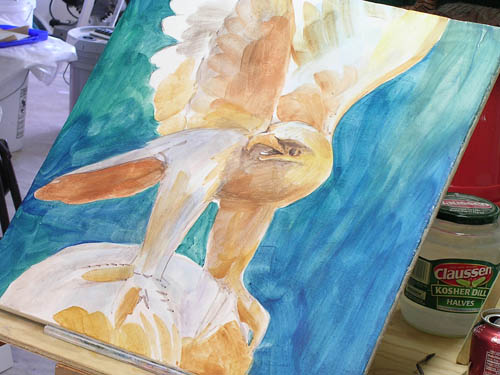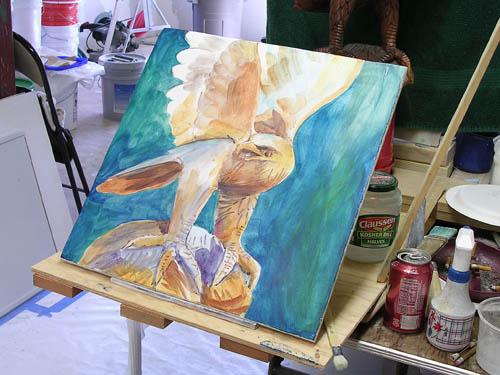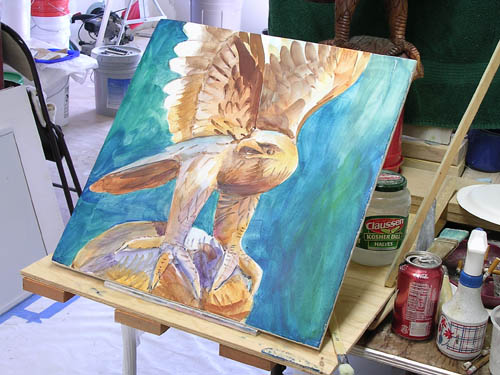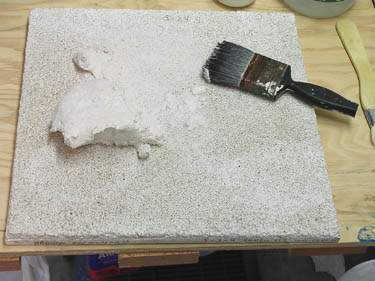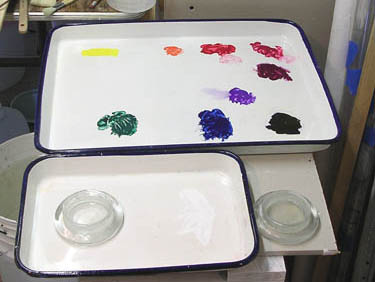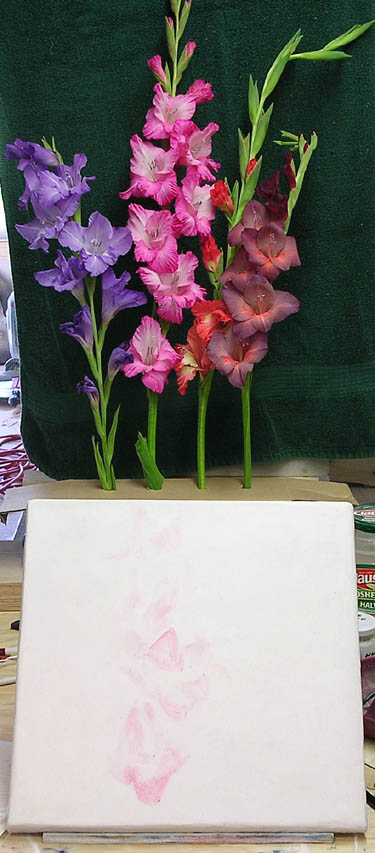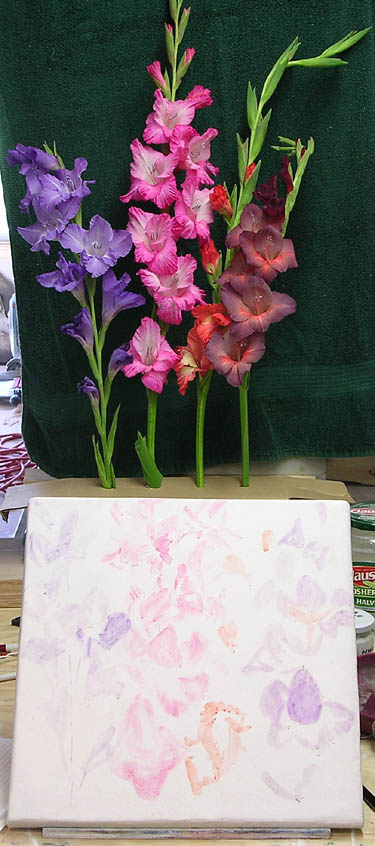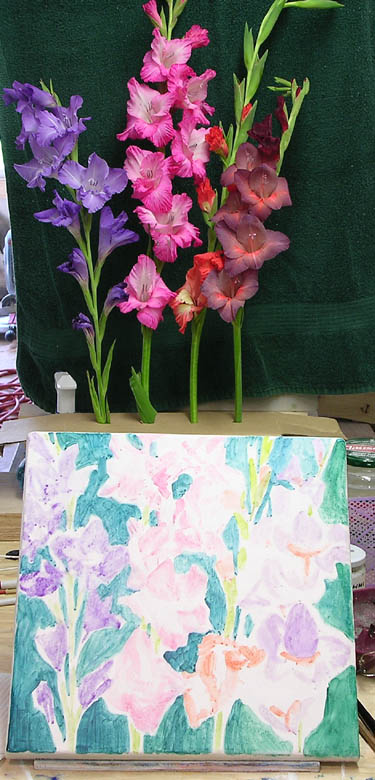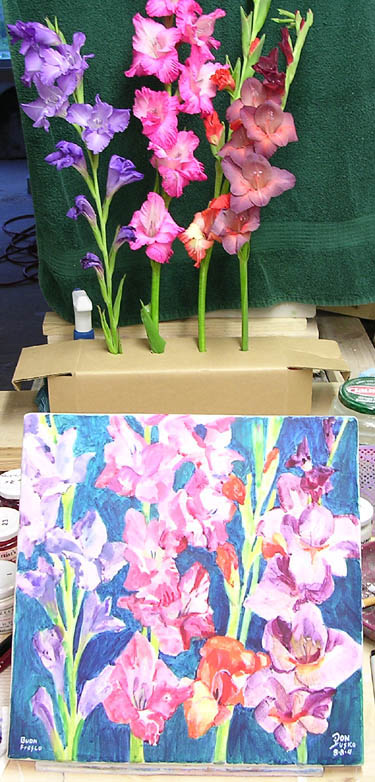|
09-03-04, Blue and Red, Flowers
2:42 Here is the clump of 1:1 small sand and lime.
This is the amount spread smoothly on top of a 1:1 rough sand and lime mortar that has been drying for 4 months. It's very hard I'm happy to say.
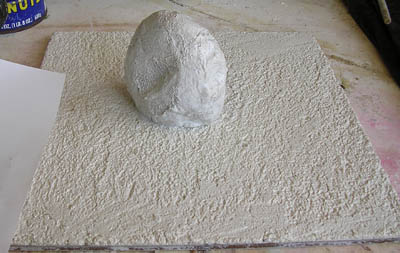
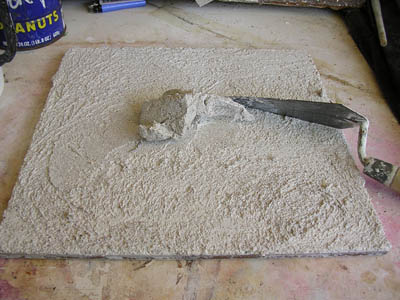
2:48 I rubbed this clump into the rough then spread it smooth and thin. All the extra lime was removed from the surface.
3:24 Small sand coat smooth, ready for the 'course' marble dust 1:1 layer, the intonaco.
3:41 Start spreading intonaco. All the extra lime that made it's way to the top was removed. I could actually paint on this coat if I wanted tol
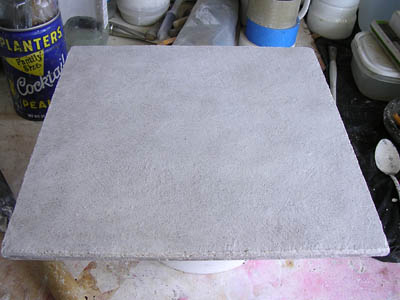
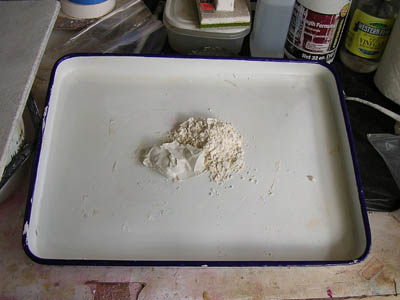
4:27 Finish intonaco, Senopia was out of the white Carrara marble dust, you can see this marble dust has a yellow tone to it. It's very smooth and very thin.
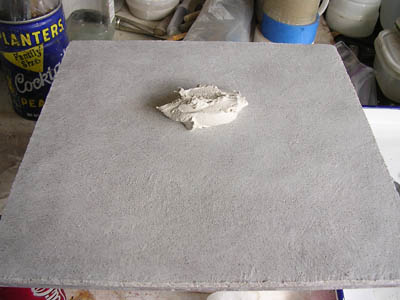
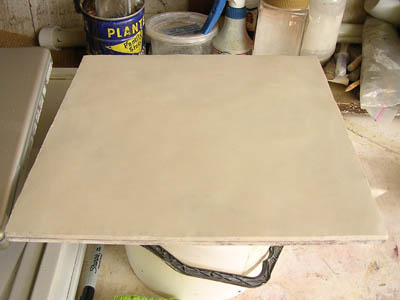
All three layers of mortar total only 1/8 inch in thickness, the base layer is the thickest.
7:25 Start painting. Lay out the pigments, brushes, lime water.
7:45 Layout
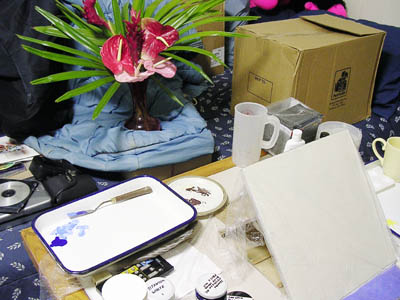
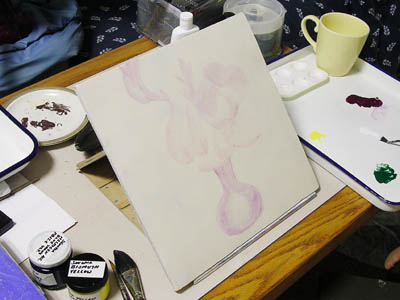
8:10, 75% coverage
9:00 100% coverage
9:45 It's still absorbing immediately, this thin layer of marble dust and lime is very nice. Maybe I'm finished, I'm taking a 15 minute break.
10:20 Finished and it's still absorbing immediately. I used titanium white, permanent red PR170 F3RK-70, quinacridone magenta PR202, cobalt blue light, Phthalocyanine blue PB15.6, bismuth yellow PY184 and viridian PG18. The cobalt blue light and PB15.6 made a good ultramarine blue hue. On my last pigment test four months ago, testing Sinopia's ultramarine blue on lime faded. That means there is no good useable ultramarine blue for fresco, sad to say. Giveing it one more chance I am doing the full test again.
Sept 5, Two days later, I held the Blue and Red, Flowers fresco under running water and rubbed my hands over it to loosen any surface pigment. 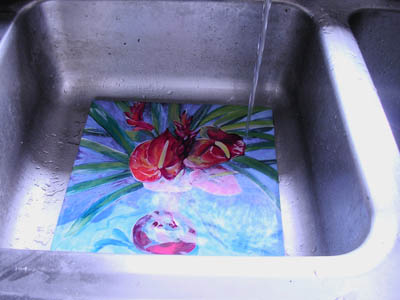
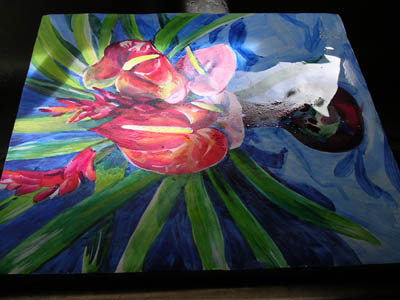
I was a little worried because before wetting it as I could get color by using a wet a Q-tip. I feel alright now, all the color still on the fresco is locked in and it looks the same.
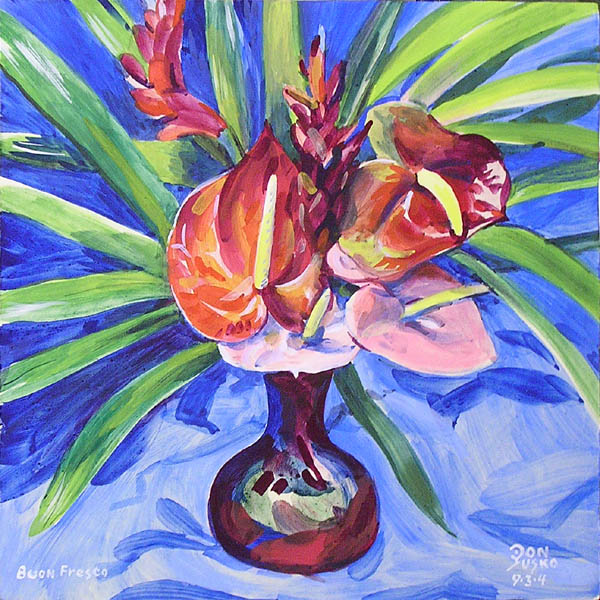

Here is the fresco before and after being washed and scrubbed with my hand.
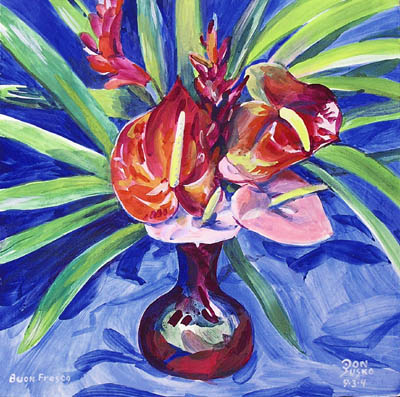
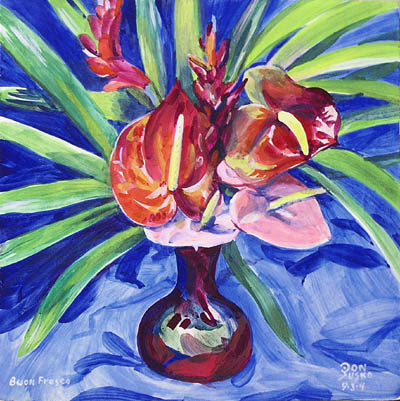
The only difference between the two is some small cracks I hadn't noticed when it was dry. Some washed off blue bleed into the cracks. There are no other cracks in the fresco. I'm going to try the next one with the marble dust intonaco thin enough to put on with a brush. I wish Sinopia had some marble meal, which is a little courser than dust.
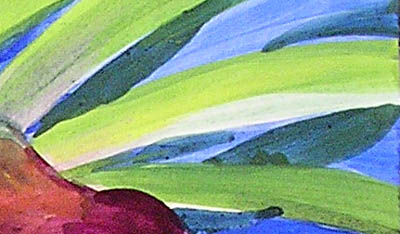
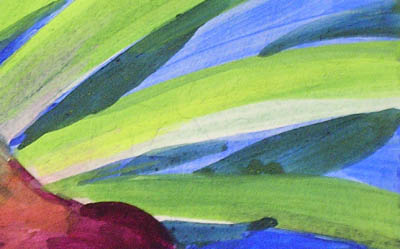
|
